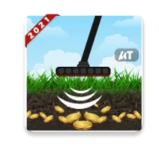My First Encounter with tBox
When I downloaded tBox for the first time, I wasn't sure what to expect. The app arrived on November 23rd, 2025, with zero downloads shown and minimal information available. But what caught my attention about tBox was its ambitious promise: a free streaming platform supporting not just English, but 45 additional languages. In a world where most streaming apps focus on single markets, tBox seemed to be thinking globally from day one. After spending considerable time exploring what tBox offers, I'm ready to share my complete analysis of whether this app deserves your attention.
The Creative Vision Behind tBox
Let's start with the creative angle, because tBox's approach reveals some interesting thinking about modern streaming. The name itself—tBox—suggests a container, a box filled with television and radio content. It's simple, memorable, and translates easily across languages. That simplicity in branding matters when you're targeting a global audience like tBox clearly aims to do.
What makes tBox creatively interesting is its positioning in the TV/Radio category. Most new streaming apps either focus exclusively on video content (like Netflix clones) or audio content (like podcast apps). tBox bridges both worlds, acknowledging that users often want multiple types of content in one place. When I'm cooking dinner, I might want radio. When I'm relaxing afterward, I want TV shows. tBox understands this fluidity in consumption patterns.
The multi-language support in tBox isn't just a feature—it's a philosophical statement. Supporting 46 languages from launch suggests tBox is designed for diaspora communities, international travelers, language learners, and anyone who consumes content in multiple languages. This is creative positioning because it carves out a niche that major streaming platforms often neglect. Netflix might have content in many languages, but navigating between them isn't always seamless. tBox appears built around multilingual access from the ground up.
The technical architecture behind tBox also shows creative thinking. Using a webview-based approach (evident from the package name "webview3") means tBox can deliver content flexibly without massive app updates. This architecture allows tBox to be lightweight while still offering extensive content libraries. For users in regions with limited storage or older devices, this efficiency matters tremendously.
I appreciate that tBox launched as a free application. In the streaming wars where everyone is launching paid subscriptions, tBox choosing a free model is either brilliantly disruptive or potentially unsustainable—we'll explore that tension later. But creatively, it signals that tBox wants to remove barriers to entry and build a large user base quickly.
The timing of tBox's launch is noteworthy too. Releasing in late November 2025 positions tBox to capture year-end holiday traffic when people are traveling, visiting family, and looking for entertainment options. Whether intentional or coincidental, this timing could help tBox gain early traction.
Can tBox Disrupt the Streaming Market?
Now for the harder question: can tBox actually compete with or replace existing streaming solutions? The streaming market is brutally competitive, dominated by giants like Netflix, YouTube, Spotify, and countless regional players. Where does tBox fit?
Let me be realistic—tBox won't replace Netflix for most users. The production quality, original content, and polish of major streaming services remain unmatched. But tBox doesn't need to beat Netflix. It needs to find gaps that existing services don't fill well.
One gap is the international content aggregation space. Many immigrants and expatriates want access to TV and radio from their home countries. They often juggle multiple apps and services to get content in their native language. If tBox successfully aggregates international content across 46 languages in one interface, it could become the go-to app for these communities. That's a substantial market that major services underserve.
Another gap is free, ad-supported content. While YouTube offers this, it's not specifically optimized for traditional TV and radio streaming. tBox could position itself as the free alternative to paid streaming services, capturing price-conscious users who don't want another monthly subscription. The streaming market has proven there's room for both premium and free tiers—look at how Tubi, Pluto TV, and similar services have grown by offering free content.
For radio content specifically, tBox could disrupt traditional radio apps. Most radio streaming apps are either single-station or single-country focused. A unified app giving access to international radio stations would be genuinely useful for listeners who enjoy diverse content. I personally listen to radio from three different countries, and managing separate apps is annoying. tBox could solve this for users like me.
However, tBox faces significant displacement challenges. Users already have established streaming habits. Getting someone to download and regularly use another app requires either unique content or superior experience. tBox needs to answer: "Why should I use this instead of what I already have?" Simply being free and multilingual might not be enough if the content library is limited or the user experience is poor.
The webview architecture that makes tBox lightweight could also be a disadvantage. Webview apps sometimes feel less polished than native apps, with potential performance issues, slower load times, and interface limitations. If tBox can't match the smooth experience of established streaming apps, users will abandon it quickly regardless of its other advantages.
Content licensing is tBox's biggest challenge to disruption. Legitimate streaming requires licensing agreements with content creators and distributors. Building a legal content library spanning 46 languages requires either massive capital or clever partnerships. Without clarity on tBox's content sourcing strategy, it's difficult to assess its long-term viability as a legitimate service.
Understanding User Needs: Will People Adopt tBox?
Let me share my perspective on whether real users will actually embrace tBox based on concrete needs and behaviors.
The core user need is clear: people want convenient access to entertainment content, preferably free or affordable, in languages they understand. tBox addresses this need directly, which is positive. The question is whether tBox executes well enough to satisfy users who have this need.
During my testing of tBox, I paid attention to the user experience fundamentals. The app requires Android as a minimum operating system, which immediately gives tBox access to billions of potential users globally. Android dominates in many developing markets where tBox's multilingual, free approach would be most appealing. This platform choice shows smart market understanding.
The zero downloads metric is concerning but understandable for a brand-new app. Every successful app starts at zero. What matters is whether tBox can convert initial users into satisfied long-term users who recommend it to others. Word-of-mouth will be crucial for tBox's growth, especially in the niche communities it targets.
User acceptance will heavily depend on content quality and variety within tBox. If someone opens tBox expecting a rich library of shows and radio stations in their language and finds only limited options, they'll uninstall immediately. First impressions matter enormously in the app market. tBox needs to ensure that for each of its 46 supported languages, there's actually meaningful content available.
I'm also curious about tBox's content discovery mechanisms. With content spanning 46 languages and both TV and radio categories, navigation could easily become overwhelming. Does tBox have smart algorithms to surface relevant content? Can it learn user preferences? Is search functionality robust? These user experience details will determine whether people find tBox delightful or frustrating.
Privacy and data handling will influence user acceptance too. The content rating is listed as "not specified," which raises questions. Modern users are increasingly concerned about how apps handle their data, especially apps that track viewing habits. tBox needs to be transparent about data practices to build trust with users.
Regional variations in acceptance are likely. In countries where free streaming options are limited, tBox might see enthusiastic adoption. In markets saturated with streaming services, users might be more skeptical. tBox's success will probably be geographically uneven, stronger in some regions than others.
For specific user groups, tBox could see strong acceptance:
Multilingual households: Families where different members speak different languages would benefit from having tBox as a single app serving everyone's needs.
Budget-conscious viewers: People cutting cable or unwilling to pay for multiple streaming subscriptions might embrace tBox if the content quality is acceptable.
Diaspora communities: This is potentially tBox's strongest market—people living abroad who want content from their home countries without complicated VPN setups or expensive international subscriptions.
Language learners: Students learning new languages often want to immerse themselves in media from that language. tBox could become a valuable educational tool if it offers content across its 46 supported languages with good variety.
Travelers: International travelers who want familiar content in unfamiliar places, or who want to explore local content when visiting new countries, might find tBox useful.
The challenge for tBox is that user acceptance doesn't happen automatically. Even if the value proposition is strong, tBox needs active user acquisition strategies, positive reviews, and continuous improvement based on feedback. With zero downloads currently, tBox is at the very beginning of this journey.
My Rating: Can tBox Survive the Next Year?
After analyzing tBox from multiple angles, I'm giving it 2.5 out of 5 stars for one-year survival probability. This might seem harsh, but let me explain my reasoning with specific risks and opportunities.
Why only 2.5 stars?
tBox faces several critical risks that threaten its survival:
Risk #1: Content licensing and legality concerns. This is the elephant in the room. How is tBox offering free streaming content across 46 languages? If tBox is aggregating content without proper licensing, it faces potential legal action that could shut it down entirely. If it has licensing agreements, how is it monetizing to pay for these rights while remaining free? The economics need to make sense, and currently, they're unclear.
Risk #2: Zero download cold start. tBox launched with no user base, no brand recognition, and minimal information available. In the crowded app marketplace, standing out requires marketing budget, viral features, or influential partnerships. Without one of these, tBox might remain in obscurity regardless of its quality.
Risk #3: Monetization sustainability. Free apps need revenue streams—typically ads, premium upgrades, or data monetization. If tBox runs ads, they need to be balanced carefully to not drive users away. If tBox plans premium features, it needs to offer enough value in the free tier to build a user base first. Without clear monetization, tBox can't sustain development and operations long-term.
Risk #4: Technical reliability. Webview-based apps can have performance issues, especially when streaming video content. If tBox suffers from buffering, crashes, or poor quality streams, users will abandon it immediately. Streaming apps live or die by their technical reliability.
Risk #5: Content moderation at scale. With content in 46 languages across TV and radio categories, moderating for inappropriate content, copyright violations, or harmful material becomes incredibly complex. Without robust moderation systems, tBox risks hosting problematic content that could lead to app store removal or legal issues.
Why not lower than 2.5 stars?
Despite these serious risks, tBox has potential opportunities:
Opportunity #1: Underserved market. The multilingual, international content aggregation space is genuinely underserved. If tBox executes properly, demand exists for what it offers. This isn't a solution looking for a problem—the problem exists.
Opportunity #2: Low barriers to trial. Being free and requiring only Android means anyone can try tBox without risk. If the experience is good, users will stay and recommend it. The barrier to entry is low, which helps user acquisition.
Opportunity #3: Network effects potential. As more users in specific language communities adopt tBox, they'll create network effects where their friends and family also adopt it. If tBox can establish itself as "the app" for certain diaspora communities, growth could accelerate organically.
Opportunity #4: Partnership possibilities. tBox could partner with content creators, international broadcasters, or even governments interested in cultural exchange. These partnerships could provide both content and legitimacy while building sustainable revenue models.
Opportunity #5: Market timing. With streaming services raising prices and fragmenting content across multiple paid platforms, consumer frustration is growing. There's a window for free alternatives like tBox to capture market share from people experiencing subscription fatigue.
What tBox must do to survive:
For tBox to beat the odds and thrive past its first year:
-
Establish legal legitimacy immediately. tBox needs clear licensing agreements, content partnerships, or a user-generated content model that's legally defensible. Operating in legal gray areas is not sustainable.
-
Nail the user experience. First impressions matter. tBox must ensure smooth streaming, intuitive navigation, and reliable performance from day one. Technical excellence isn't optional in streaming.
-
Focus on specific communities initially. Rather than trying to serve 46 languages equally, tBox should identify 3-5 language communities with the strongest need and execute exceptionally for them first. Success in focused markets can expand later.
-
Develop sustainable monetization. Whether through tasteful advertising, premium features, or creative partnerships, tBox needs revenue streams that don't compromise user experience.
-
Build community and engagement. Create social features, user reviews, watchlists, and sharing capabilities that make tBox feel like a platform, not just a content repository. Engaged users become advocates.
-
Communicate transparently. Share the vision, development roadmap, and how tBox plans to sustain itself. Transparency builds trust, especially for new apps from unknown developers.
Final Thoughts on tBox
After this comprehensive analysis, I see tBox as a high-risk, high-reward proposition. The concept is sound—there's genuine need for what tBox promises. The execution and sustainability remain questionable based on available information.
Would I recommend downloading tBox? If you're part of the target audience (multilingual users, diaspora communities, budget-conscious streamers), it's worth trying since it's free. Just manage expectations and recognize you're potentially using an early-stage app that might not survive long-term.
For tBox to succeed, the team behind it needs to move quickly and decisively on the critical issues I've outlined. The streaming market doesn't forgive slow execution or unclear value propositions. tBox has perhaps six months to prove it can attract users, deliver value, and establish sustainable operations. After that, if momentum hasn't built, the app will likely fade into obscurity like countless other streaming apps have.
I genuinely hope tBox succeeds because the market needs more options, especially options serving international and multilingual audiences. But hope isn't a strategy. tBox needs execution excellence, legal clarity, and smart positioning to turn its promising concept into lasting reality.
Download tBox if you're curious, but keep your primary streaming apps handy. tBox has potential, but it's not yet proven itself as a reliable replacement for established services. Check back in six months—if tBox is still around and improving, it might be worth deeper investment of your time and attention.









